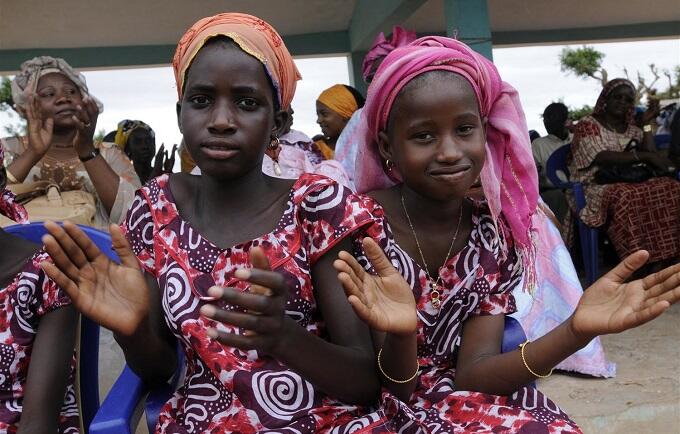Women and girls represent half of the world’s population and therefore also half of its potential. But today, gender inequality persists everywhere and limits social progress. Gender inequality of girls begins right at birth and follows them throughout their lives. In fact, as girls grow, gender inequality keeps widening.
Child marriage as one of the harmful practices is a reflection of such underlying gender inequalities and a sign of gender discrimination, which severely affects the rights of a child and further deprives the child from attaining aspirations in life. While it affects both boys and girls, girls are disproportionately affected being four and a half times more likely to get married at an early age compared to boys. The World Bank research (June 2017), clearly demonstrates the economic cost of the practice on: fertility and population growth; Health, nutrition and violence; Education, labour and earning; and others such as women’s decision making and knowledge of HIV/AIDS.
Despite the practice being a violation of children’s rights with such impacts and global and regional commitments, child marriage is still prevalent in most of the countries in the world. Worldwide, more than 75 million young women aged 20 to 24 years (a quarter of them in Africa), entered their first marriage or union before they celebrated their 18th birthday. Girls from the poorest households and girls in rural areas are twice as likely to become child brides as girls than the richest households than urban areas, respectively. Child marriage is generally more frequent in countries where poverty is extreme and among the poorest groups within countries.
Globally, Sub-Saharan Africa has the 2nd highest rate of child marriage followed by South Asia; 7 out of 10 countries with the highest prevalence of child marriage in the world are found in Africa. From approximately 15 million girls married every year before the age of 18, 39% of them are in Sub-Saharan Africa and 30 out of the 41 countries with a child marriage prevalence rate of 30% or more are located in Africa.
Regionally, prevalence varies and the West and Central Africa region has the highest prevalence rate of child marriage with 5 out of 6 highest prevalence rate countries in the world: Niger (76.3%), the Central African Republic (68%), Chad (68%), Mali (55%) and Guinea (52%).
A lot of efforts have been made to eliminate child marriage at global, regional and country levels including among others the African Union (AU) Campaign to End Child Marriage in Africa - a continent-wide initiative launched in 2014, and the endorsement of the AU Common African Position to End Child Marriage (June 2015). The continental launch was followed by a total of 21 country launches as of end of October 2017 of which 12 belong to the West and Central Africa region. UNFPA has been one of the key partners contributing to such efforts at all levels.
As part of this effort and in addressing the high prevalence of child marriage in the West and Central Africa Region, the Government of Senegal with support from a Coalition of UN Agencies (UNICEF, UNFPA, UN Women) and CSOs hosted a High Level Meeting on Ending Child Marriage was held from 23rd – 25th October 2017 in Dakar, Senegal. The Meeting aimed at building consensus on what it will take to translate existing and future commitments into tangible, measurable actions towards ending child marriage in the region.
The High Level Meeting was graced by the PM of Senegal His Excellency Mr. Mahammed Boun Abdallah Dionne and attended by about 250 participants including First Ladies, Ministers and other high level government officials from 24 countries in the region, representatives from the African Union Commission, the Regional Economic Communities, UN Agencies, CSOs and donor representatives from all four UNFPA-UNICEF Joint Global Programme for Child Marriage. The participants collectively emphasized for the need to address child marriage for attaining the commitments made at national, regional, continental. UNFPA and UNICEF played a pivotal role in supporting the organization of this event and in sponsoring the participation of ministers and technical directors from 24 countries and co-hosting a high level side meeting with donors and government representatives from the UNFPA-UNICEF Global Programme countries.
Taking into account high prevalence of child marriage in West and Central Africa, which is the highest in the world, and acknowledging current initiatives by member states, the African Union and other stakeholders, the outcome document (The Dakar Call to Action) calls upon governments to make the issue a priority; stress the need to foster partnership with key stakeholders including with the religious and traditional leaders, girls and young people, UN agencies and development partners and CSOs among others. The document also recognizes the health consequences of child marriage including obstetric fistula and maternal mortality among adolescent mothers as well as the need for youth-friendly SRH education and services.
Evidence shows that child marriage negatively impacts on girls, their children, families, communities, and societies and impacts economies. According to UNICEF’s profile of child marriage in Africa, almost half of the child brides in the world will be African by 2050 if these trends continue.
According to the World Bank and the International Center for Research on Women the global benefit from ending child marriage by 2030 is estimated at $566 billion from welfare benefit from reduced population growth; $82 billion from reduced under five mortality; and $16 billion from under-give stunting. African governments and stakeholders have to keep the momentum and do much more for Africa to gain its share from this benefit and be able attain Agenda 2063 and 2030 Sustainable Development Goals.


